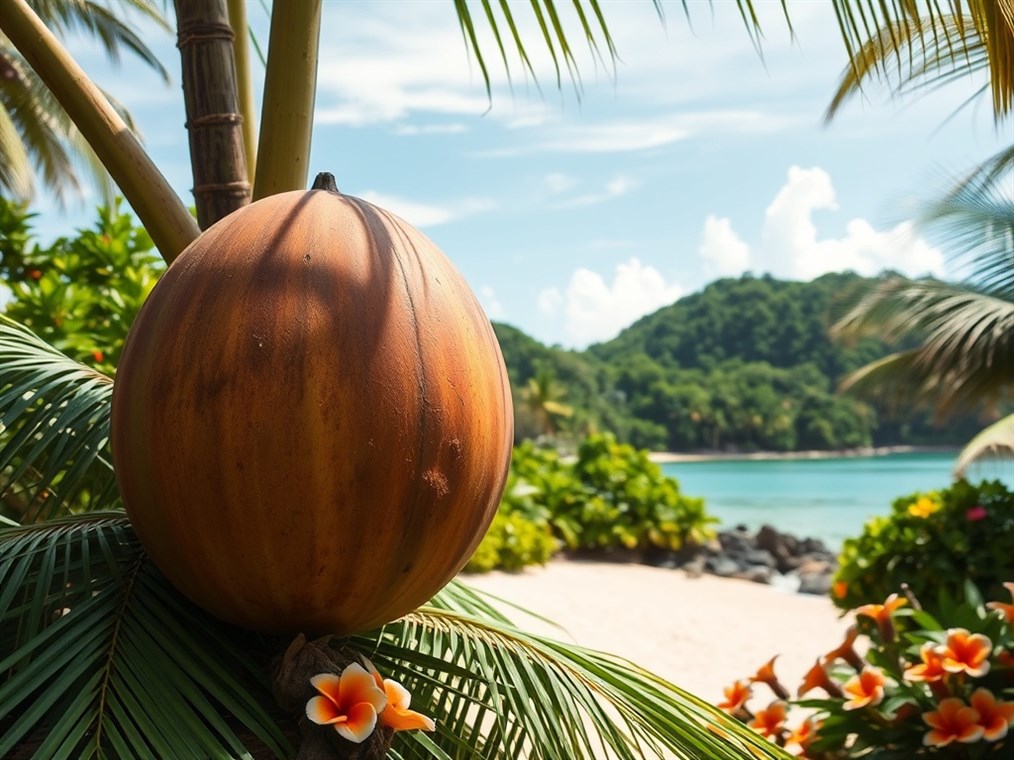Ever Wondered if You Can Actually Eat a Coco de Mer? Let’s Find Out!
The coco de mer. Just the name conjures up images of exotic islands and hidden treasures, doesn’t it? Officially known as Lodoicea maldivica, this incredible plant, native to the Seychelles, boasts the largest seed in the entire plant kingdom. Seriously, it’s massive! For ages, people have been captivated by its, shall we say, distinctive shape and the myths surrounding it. But the question I always get is: can you actually eat one of these things? Well, the short answer is yes, you can. But hold your horses, there’s more to the story than that.
So, what’s it like to chow down on this “forbidden fruit?”
Turns out, the kernel inside the coco de mer has been part of the Seychellois diet for ages. They even used to ship it off for culinary and medicinal purposes. Now, it’s not like you’ll find it lining supermarket shelves anytime soon, but yeah, it’s technically edible.
Okay, so what does it taste like? This is where things get interesting. Some folks say it’s kinda bland, with just a hint of hazelnut, chestnut, and even…goat cheese? Weird, right? Others swear it’s like a sweet, citrusy coconut with a wobbly, jelly-like texture. The one thing everyone seems to agree on is that it’s pretty darn hard, especially if it’s dried out. Good luck getting through that!
Historically, they’d grate or grind the kernel into a paste and sneak it into local dishes. Think soups, stews – anything where it can soak up the flavors. I even heard about this crazy food festival in the Seychelles where they were whipping up coco de mer ice cream, mousse, even bread! Talk about getting creative.
Nutritionally speaking, it’s supposed to be packed with micronutrients and carbs, and practically zero fat. Of course, we’re not exactly swimming in scientific studies about coco de mer nutrition, but it’s known to have minerals like potassium, magnesium, and manganese. Not bad for a giant nut, eh?
But wait, there’s more! This thing isn’t just for eating.
Apparently, it’s got a history in traditional medicine, too. Back in the Seychelles, they used to use it to treat everything from cancer to poisoning. And in some parts of China, they see it as a medicine and, ahem, an aphrodisiac. Plus, some folks swear it’s a natural tonic and metabolism booster. Who knew?
And the uses don’t stop there! The tough shell has been turned into water containers and platters. In India and Saudi Arabia, you might even spot them being used as ceremonial bowls in temples and mosques. The wood is so durable that people carve art pieces out of it. Talk about versatile!
Now, here’s the really important part. Before you go hunting for coco de mer to add to your next smoothie, let’s talk about conservation.
These amazing plants are officially endangered. Yep, they’re on the IUCN Red List, and their numbers are dwindling thanks to things like forest fires, illegal harvesting, invasive species, and, of course, climate change. It’s a serious situation.
The Seychelles government keeps a very close eye on these nuts, and there are strict rules about collecting and trading them. It’s all about preventing overharvesting and protecting the species.
So, if you ever come across coco de mer products, do your homework! Make sure they’re sourced ethically and sustainably. Only nuts that have fallen naturally from the trees should be collected. And those souvenirs you see? Usually, the kernels have been removed to stop people from trying to plant them illegally.
At the end of the day, the coco de mer is way more than just a weirdly shaped, edible nut. It’s a national symbol of the Seychelles, a vital part of their natural heritage, and a source of endless fascination.
So, can you eat it? Sure. But should you be prioritizing it as your next snack? Probably not. Let’s focus on protecting this incredible species and appreciating its unique place in the world. If you do happen to try it, make sure you’re doing it in a way that respects its protected status and supports sustainable practices. After all, we want future generations to be just as amazed by the coco de mer as we are today.

